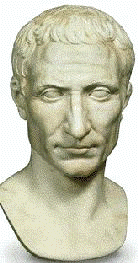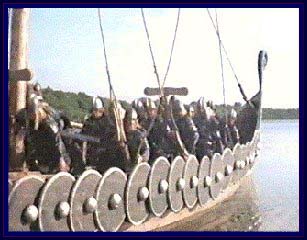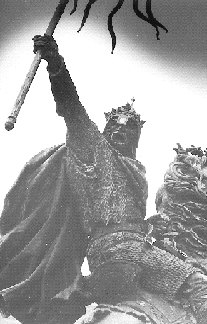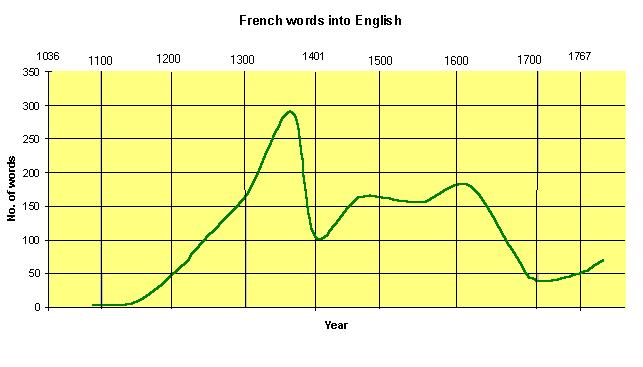EL1102
Studying English in Context
Lecture No. 8 (Part 1)
I will use a video to convey most
of the information; the notes are for you to read and digest. You can view the
video through the NUS intranet: click on
http://ivle.nus.edu.sg/ivle/search/template.asp?courseid=EL1102
Click on ‘videos’ on the left. You
will be asked for your user ID and password. (Your user ID must be in the form
NUSSTU/xxxxxs for students or NUSSTF/xxxxxx for staff.) Then click on ‘The
Mother Tongue’, and you should be off.
If your computer hasn't got a
player installed, you can go through the following steps:
- Click here to download
SGI DirectShow Player for Win95/98/NT
- During
the download, you will be prompted to enter a location for saving the
setup file. Save it in \Windows\Temp. This temporary file will not
be required after the player is installed.
- Using
the Windows Explorer or Command Prompt, change to directory \Windows\Temp
- From
the Windows Explorer or Command Prompt, run the DirectShow player set-up
program dssetup to install the DirectShow player. Click on all the next
buttons.
A table is distributed with this lecture, dealing with the peoples discussed in
this lecture: http://courses.nus.edu.sg/course/elltankw/EL1102-wk8c.htm
Go to the time chart: http://courses.nus.edu.sg/course/elltankw/EL1102-wk8a.htm
There are lots of Web pages with information on
the external history. Here are some useful links: http://courses.nus.edu.sg/course/elltankw/EL1102-wk8b.htm
At this point now, we are ready to discuss some aspects of the external history
of English and we can relate some of it to the internal history. Please consult
the time
chart. Because we will discuss the external history, I will give a
quick sketch of the salient events through a series of maps. Our main interest
will be in the relationship between the external history and the
language.
Phase 1. Pre-English Days
(AD 1–450)
Notice that there was no such thing as ‘English’
during this period. The inhabitants of Britain — the Britons — did not speak
English, but various Celtic languages. We mentioned in the last lecture
that modern Welsh, Irish Gaelic and Scots Gaelic are Celtic languages and
‘survivors’ of the original languages in Britain. In Northern France, a Celtic
language that remains to be spoken is Breton. Some of you might be aware of
Celtic legends (eg King Arthur and the knights of the round table) or of
the Asterix comics set in the Roman period.
 This was also the time when
the Roman Empire was dominant, and continued expanding until the second
century. For much of this period, Britain was a Roman colony. The language of
the Roman Empire was Latin. Some form of Latin would have been spoken by
at least part of the local population in Britain and other Roman colonies.
However, the dominant languages continued to be the Celtic languages. This is
unlike Gaul (‘France’), another Roman province, where Latin to a large extent
replaced the local Celtic languages. (Modern French is derived from the variety
of Latin spoken in Gaul.)
This was also the time when
the Roman Empire was dominant, and continued expanding until the second
century. For much of this period, Britain was a Roman colony. The language of
the Roman Empire was Latin. Some form of Latin would have been spoken by
at least part of the local population in Britain and other Roman colonies.
However, the dominant languages continued to be the Celtic languages. This is
unlike Gaul (‘France’), another Roman province, where Latin to a large extent
replaced the local Celtic languages. (Modern French is derived from the variety
of Latin spoken in Gaul.)
(Please note that during
this period, it is meaningless to talk about ‘England’. There was no such
entity then. We can only refer to the whole island — Britain.)
Phase 2. Anglo-Saxon
invasions and consolidation in Britain (449 onwards)
The OE extract from the Anglo-Saxon Chronicle
tells us that the Romans faced many problems from attacks by various tribes,
including the Huns. In 410, the last of the Roman legions left Britain, which
meant that the island was left open for attack or occupation by various tribes.
From about 449, these so-called Germanic tribes started attacking and
migrating to Britain. They were originally from around present-day Germany,
Denmark and the Netherlands (Holland). The original Celtic tribes were chased
off to the northern, western and south-western extremities, and it is therefore
not surprising that it is in these places where some Celtic languages (Welsh,
Scots Gaelic) survive. Those who remained in the central areas would probably
have been overwhelmed by the Germanic tribes, and have merged in with them, and
we can perhaps think of this as the centripetal force at work. It is
interesting that there are in fact very few Celtic borrowings into the English
language.
The tribes that set up
their kingdoms in Britain are collectively known as the Anglo-Saxons.
Bede, an 8th century historian, tells us these tribes included the Jutes
and Angles (both from present-day Denmark), and Saxons (northern
Germany and the Netherlands). A fourth tribe, the Frisians (from
present-day Netherlands), also came to Britain. Their language existed in
several dialects — generally each tribe (Angle, Saxon, Jute, Frisian) had its
own associated dialect. Their language is often collectively known as Anglo-Saxon
or Old English. Sometimes the term Saxon is used on its own
because the ‘standard’ that developed was based on the West Saxon (or Wessex)
dialect in south-west England.
Latin texts of the time
used the terms Angli and Anglia to describe the country, and
local writers describe their language as Englisc (English). These terms
derive from the name of the Angle tribe (in OE Engle). The people and
the land, collectively, were known as Angel cynn (‘Angle-kin’), and it
was not until around 1000 that the name Englaland (Angles’ land) was
used.
By and large, they were
well-known for their military prowess, and not for their sophisticated culture.
They were concerned with ordinary day-to-day living, and there was a lot of
in-fighting until they were united by King Alfred the Great (871–899). As a
result of this a standard began to be developed based on the Wessex (‘West
Saxon’) dialect. Writing was very, very limited (first text: around AD 700),
and generally, only specially trained scribes (usually monks) could write.
Writing was only used for special records. Therefore, whatever writing there
was tended to have the feel of conversation — we referred to the paratactic
structures in our discussion of the OE passage. Additionally, we can consider
the down-to-earth vocabulary as reflecting the comparatively unsophisticated
nature of the Anglo-Saxons.
Phase 3. Viking invasions
(787 onwards)
 The Scandinavian attacks on
Britain took place between 787 and 850. These people were commonly known as the
Vikings and they were Germanic inhabitants in presently Denmark, Norway and
Sweden. What is interesting therefore is that they were originally also
neighbours of the Anglo-Saxons, and therefore spoke a closely related language
(Old Norse) that they would have understood a lot of. We can call Old
Norse and Old English cognate or related languages.
The Scandinavian attacks on
Britain took place between 787 and 850. These people were commonly known as the
Vikings and they were Germanic inhabitants in presently Denmark, Norway and
Sweden. What is interesting therefore is that they were originally also
neighbours of the Anglo-Saxons, and therefore spoke a closely related language
(Old Norse) that they would have understood a lot of. We can call Old
Norse and Old English cognate or related languages.
The Scandinavians raided
towns and monasteries; they captured towns and cities and then proceeded to
settle in these places. The army of Alfred the Great resisted them for seven
years before taking refuge in the marshes of Somerset. However, fresh troops
enabled him to attack the Scandinavians, under Guthrum, and defeat them
convincingly. Alfred and Guthrum signed the Treaty of Wedmore in 878, and the
Scandinavians (‘Danes’) agreed to settle on the east of the line, running
roughly from Chester to London. This region would be subject to Danish law, and
is therefore known as the Danelaw. The Danes also agreed to become
Christians and Guthrum was baptised. This began the process of the fusion of
these two peoples, coming to a head in the next period of history.
This, however, was not the
end of the battles. There were more Scandinavian attacks later on, and in the
new millennium, England was ruled by Canute (or Cnut), the Danish king.
After taking over the land,
the Scandinavians often lived peaceably with the English, and there were many
intermarriages. They adopted English customs, and the English accepted them.
More important for our purposes, however, is the language contact situation
resulting in the English language accepting Old Norse (ON) words and forms. For
example, the personal pronouns they, them and their come from ON.
So does the 3rd person inflexion for verbs –s. Words that are borrowed
from ON include anger, cake, egg, loan, root, skirt, steak, take and window.
There was no obvious centripetal or centrifugal force at work.
Many suggest that the contact
between OE and ON might have led to the loss of many inflexions. Because the
inflexions were different in OE and ON, they were often unhelpful in
conversation between OE and ON speakers. They suggest that speakers might have
deliberately not used the inflexions to facilitate communication. In situations
of intermarriage, the children might grow up learning this ‘simplified’ version
of English. Some would even say that the English language had undergone a
process of pidginisation and creolisation.
Phase 4. The Norman
Conquest (1066 onwards)
Meanwhile, there were also
Scandinavians who settled in northern France, and they came to an agreement
with the king of France. They acknowledged the French king, but they had a duke
from among their people in this region, called Normandy. They would,
from then on, be known as Normans. (The adjective is Norman, as
in ‘Norman army’.) Like the Scandinavians in Britain, the Normans were also
highly adaptable, and very quickly adopted French culture and civilisation,
and, it would appear, willingly gave up their native language and spoke French
as their mother tongue, although their dialect, Norman French, was
distinct from Parisian (Central) French.
 There was already a certain
amount of contact between the Normans and the English at the turn of the
millennium. It was through the contact between the English king Edward that the
duke of Normandy, William, believed that he was to succeed the English throne.
When Edward died, an English earl, Harold, was elected king instead. Furious as
this decision, William sailed across to an unprepared English army. After
Harold was killed in battle, the English army became disorganised and soon
retreated. On Christmas day in 1066, William (‘the Conqueror’) was crowned
king.
There was already a certain
amount of contact between the Normans and the English at the turn of the
millennium. It was through the contact between the English king Edward that the
duke of Normandy, William, believed that he was to succeed the English throne.
When Edward died, an English earl, Harold, was elected king instead. Furious as
this decision, William sailed across to an unprepared English army. After
Harold was killed in battle, the English army became disorganised and soon
retreated. On Christmas day in 1066, William (‘the Conqueror’) was crowned
king.
William brought along with
him his followers, and key positions in the government and in the church were
taken over by Normans. The original English lords had either been killed in
battle or been executed as traitors. The Normans continued to speak French in England,
and therefore, almost overnight, English was relegated to the status of a
‘peasant language’. For several generations after the conquest, all the
important positions were taken by Normans, or foreign men. As they had
continued contact with France, the nobility continued to speak French, and did
not bother to learn English.
The position of the English
and the Scandinavians as conquered people helped the process of fusion
between them, described above, so that the English language continued to change
under these circumstances. Doubtless, some English speakers learnt French (the centripetal
force) to gain the advantages from aristocracy; and some Normans – perhaps
officials sent to far outposts – learnt English through their contact with
local communities (accommodation perhaps?) Later on, after some 150
years, the enmity and distinction between the English and the Normans became
less pronounced, and intermarriages became common.
From the 13th century,
there was a change in the political climate. King John of England fell out with
King Philip of France. Philip demanded that John should appear in Paris to
answer some charges against him. John replied that as king of England, he was
not subject to the jurisdiction of the French court. Philip, however, replied
that as duke of Normandy, he was. John therefore demanded safe conduct to
Paris, but Philip gave out terms that he could not accept. The result was that
John did not appear on the day of the trial. Philip promptly invaded Normandy
and in 1204, Rouen surrendered, and the English lost Normandy. Subsequently,
any Norman lords in England had their lands in France confiscated by the French
king. The Normans now had to choose between their French estates and their
English estates. Those who remained in Britain, therefore, began to lose their
continental connexions and began to identify themselves with England. As a
result of this, the use of English began to spread, even among the upper
classes.

The Norman period brought
about new spelling conventions (scip became ship; boc
became booc), but most importantly, some 10,000 French words came to be
borrowed. Notice that the peak of the borrowing came at around 1375, when
French was on its way out.
Phase 5. The Reformation,
the Renaissance, the rise of science, and the establishment of colonies (1500
onwards)
The English Reformation has to do with Henry
VIII’s breaking away from the (Roman) Catholic church. This saw the rise of the
notion of nationhood and nationalism. Some saw the development
of an English language capable to cope with all kinds of situations as being
necessary for nationhood. The English language therefore took over Latin as the
language of learning. The notion of a standard language also began to
gain importance. (The notion of a standard language will be discussed in a
later lecture.)
The Renaissance has to do
with a renewed interest in the Classics (essentially Latin and Greek Classics).
Many thought that in order for the English language to be capable of dealing
with the new way of doing things in science, English had to borrow from Latin –
both the lexis as well as the structure (hypotaxis). This is linked to the
notion of standardisation mentioned above, in that one way of achieving
a language that is capable of coping with the new circumstances is to adapt it
towards other languages (in this case, Latin), that has served as standard
languages.
The British also began to
establish colonies abroad, and by so doing, took the English language out of
the continent of Europe. The result is that there are speakers of English in
every continent today. In 1600, around the time of Shakespeare, there were
about 6 million speakers of English. Today, it is used by at least 750 million
people, if not more. If you look at the time chart, you will notice that the
events to do with the history of English take place not only in Europe, but in
other parts of the world. It is not possible to do justice to a description of
all places where English is spoken, so this module has chosen to focus on some of
the developments in North America and in South-east Asia, particularly
Singapore.
The transportation of
English to new areas led to new kinds of language contact. In America, the
contact was often with the languages of the other European immigrants
rather than with the native American Indians. In other places, the contact was
with the existing languages.
We can make a distinction
between immigration (settlement) and colonisation, because in the
case of immigration (North America, Australia, New Zealand, etc.), the
Anglo-Saxon culture of the original speakers have also been brought over. In
the case of colonisation (Jamaica, Nigeria, Zambia, India, Malaysia, etc.),
English is transported to a new socio-cultural situation.
The external history of the language adds a
further dimension to our consideration of English, and throws up certain
patterns of change in the language.
- The
history of a language has to do with people choosing to use this
language over another language (English over a Celtic language,
English over Latin, English over Norse, English over French, English over
Malayalam). It is ultimately people who decide what language to use
and how to use it. Language does not have a life of its own, although we
might sometimes talk as if it did.
- It
has also got to do with people willing to adapt, consciously or
unconsciously, the language that they use to suit their own purposes (have
the inflexions become redundant? have they got enough words to express
their Christian faith, their interest in the arts, their interest in
learning, their encounter with unfamiliar flora and fauna?) Discussions
about the right or the correct language are not very meaningful out of the
context of people needing to accomplish things through language.
- We
notice the themes of language contact (OE and ON, English and
French, English and Malay/Hokkien); of prestige languages/dialects
(English or Celtic? English or Norse? English or French? English or
Latin?). More than any other language, English is a result of language
contact. Some might less flatteringly refer to the English language as
a creole or a bastard language. Indeed, some claim that it
is the adaptable and welcoming nature of the English language towards
other languages that it comes into contact with that makes it eminently
suited for its role as a world language.
- A
lot of people are worried about the notion of change in language.
If we use English as our example, change in language is almost inevitable
if it is to remain dynamic and relevant to the speakers of the language.
Quite often, there are internal checks and balances to ensure change will
be in a manageable rate.
Click
here to go to Part 2 of Lecture 8
Click here to
return to the EL1102 Home Page.
Click here to
go back to the EL1102 lecture schedule.
Click here to
go to Tutorial No. 6, based on this topic.
Email
me for comments or questions.
© 2001 Peter Tan